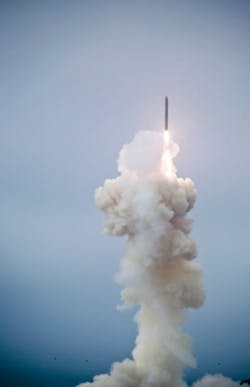VANDENBERG AIR FORCE BASE, Calif., 29 Jan. 2013. A Boeing-led [NYSE: BA] team, working with the U.S. Missile Defense Agency, has returned the Ground-based Midcourse Defense (GMD) system to testing with a flight test. The GMD is the United States' primary defense against long-range ballistic missile threats.
GMD flight testing was halted in early 2011 after a guidance error resulted in a failed intercept in a December 2010 test.
The GMD team had to solve an issue related to what the interceptor's exoatmospheric kill vehicle (EKV) experiences in space. The recent test is an important step toward a successful intercept test.
The test at Vandenberg Air Force Base began on January 26 at 2 p.m. Pacific time with the launch of a GMD ground-based interceptor (GBI) carrying a next-generation EKV. The test measured the EKV's performance as the vehicle operated under stressful space conditions. Data gathered during the test will be used to validate the EKV's design.
GMD is an element of the United States' layered ballistic missile defense architecture. With interceptors deployed at Vandenberg and at Fort Greely, Alaska, the program consists of command-and-control facilities, communications terminals and a 20,000-mile fiber-optic communications network that interface with ballistic missile defense radars and other sensors. Boeing has served as prime contractor since 2001 and works with industry partners Northrop Grumman, Orbital Sciences Corp., and Raytheon.
